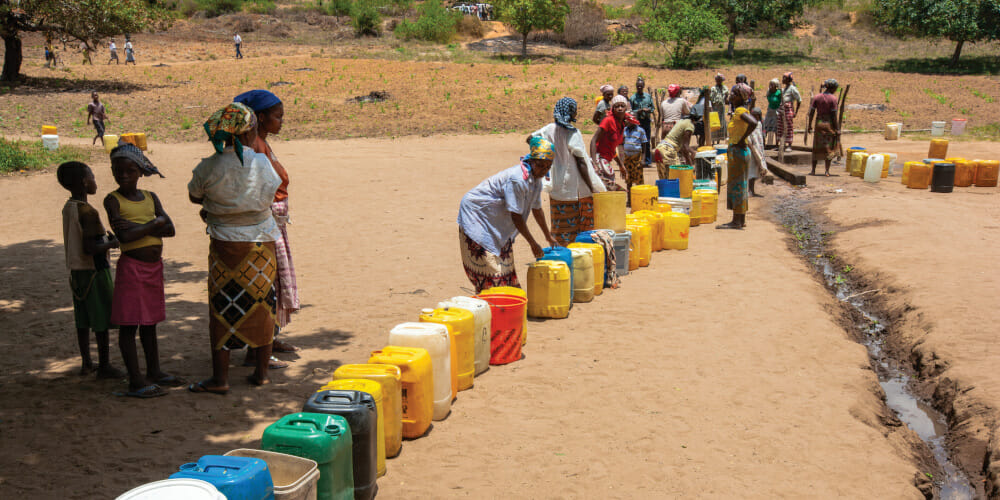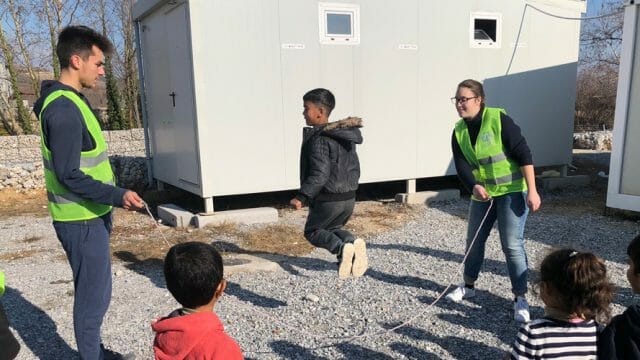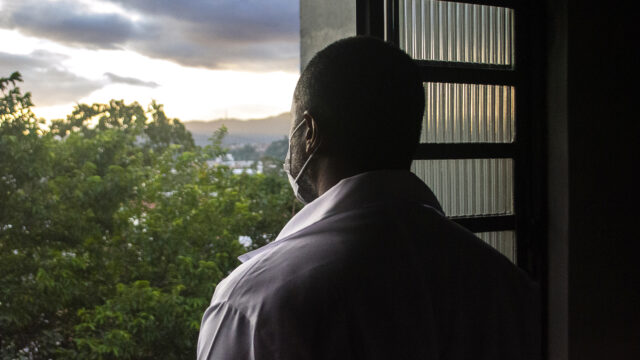I don’t remember the name of the village, though my photographs keep the memory colorfully clear. It was a place of deep-gray dust, […]

I don’t remember the name of the village, though my photographs keep the memory colorfully clear. It was a place of deep-gray dust, ragged clothes, spindly cashew trees, and thorn bushes interspersed with occasional clumps of grass.
Two young boys tried to sell me a race car they had crafted from discarded wire, red rubber bands, and Coke cans. I didn’t have room to carry it home, but bargained with them anyway. They desperately needed whatever money I could give them. We settled on a price, and after I borrowed the local currency from Garry, I gave them double, the equivalent of US$2.
When I showed the car to Garry he laughed and asked how I was going to get it home.
“Not sure,” I answered.
“No problem,” he said. “I’ll toss it into one of my bags and bring it home on my next trip.”
It was just like Garry. He didn’t need to do it, but offered to be my “mover,” because he wanted to help me out of a tough situation.
* * *
The day had begun with four hours of dusty bouncing and sweating through the bush of Mozambique. Garry wanted us there when he drilled this well.
“This is one of the poorest places I’ve ever visited,” he said. “There’s a well down the path about a mile or so, but the fellow who owns it charges so much for the water that most of the village goes to bed thirsty every night. I’ve found a spot near the church where there should be water, maybe even less than 100 feet down. Can hardly wait to drill.”
The drill was already there, pulled in last night and set up by Garry’s crew of ADRA workers.
When I say “the drill,” you might think of something simple hanging off the back of a pickup. Not Garry’s drill! This was a rig Garry had designed after several weeks of bouncing along Mozambique’s back country highway trails. The drill was really three vehicles: A drilling rig built into a monster truck, a water tank and power generator carried by a similar truck, and an accompanying 4×4 pickup. It took all three, and four men, to drill a well.
“I think,” Garry told me, “that every time there’s a new church out here in the thorn bush, we ought to drill them a well. You know, the water of life and the Water of Life, both coming together in the village. We could maybe even place the well right beside the church. Imagine, villagers coming to the well for free water and listening as church members sing about Jesus, the true Water of Life! That’s evangelism at its best.”
Garry had located the only possible spot for drilling the well. The new water source would be about 20 paces from the homemade church the members had put together with kinesu straw and palm branches.
* * *
A crowd was waiting. Mostly children and women, since the men were off working in the fields, or away in the mines of South Africa. Their greeting was a song. Make that: “Their greeting was many songs, sung loudly, their voices rising, leveling, rising higher, and dipping deep like kingfishers on the distant riverbank.”
Garry laughed through his ever-ready smile, and motioned for everyone to sit down on the church pews. The pews, by the way, were long branches set into slingshot “Y’s” that had been driven into the dirt.
“Most uncomfortable pews I’ve ever sat upon,” Garry said with a smile.
Garry explained to everyone about the well. Why we were drilling it. How deep the crew would drill it. What the pump would be like and how it could be repaired with a simple rubber washer made from an old tire tube. Why the water there must always be given free, at “no cost” to the villagers.
Then Garry led us all out to the trucks and many of the members prayed for the well. Long prayers, well prayed.
The drilling took most of the day. Far longer than Garry had expected. There was only sand down through 50 feet. Then a bit of stone, then more sand.
“Should be water soon,” Garry smiled.
Most of the women left to care for life around their huts. The children drifted in and out, coming back only when the drill crew added a length of pipe, or when the rig backfired.
At 120 feet the well was still dry. Same at 180. That was as far as the drillers could go.
Garry cried.
* * *
Right there by the monster drilling rig he had personally designed and built. By the same rig that had already drilled more than 800 water-gushing wells into the dust of Mozambique.
Garry cried. Big tears falling down his face to join the thick sweat that stained his shirt.
When the rig motor died, the women returned, bright plastic water jugs bouncing expectantly on their heads. Like giant red, yellow, and blue M&Ms dancing in the African heat.
Garry explained about the sand, the 180 feet, “maximo,” and told them all he was very, very, very sorry.
Everyone cried.
Then the head elder motioned for us to join the members in the church. We came together, sitting on the incredibly uncomfortable pews, listening as Garry explained it all again and again, until all that remained was a sad silence.
Then an older woman began to sing. Others joined, and soon the sweat-stained congregation’s singing chased away the dusty sadness. “Jesus, after all, is still King and Saviour,” the elder proclaimed. “He will provide water for our jugs in another way.”
Dick Duerksen, a pastor and storyteller living in Portland, Oregon, United States, is known around the world as “an itinerant pollinator of grace.”








